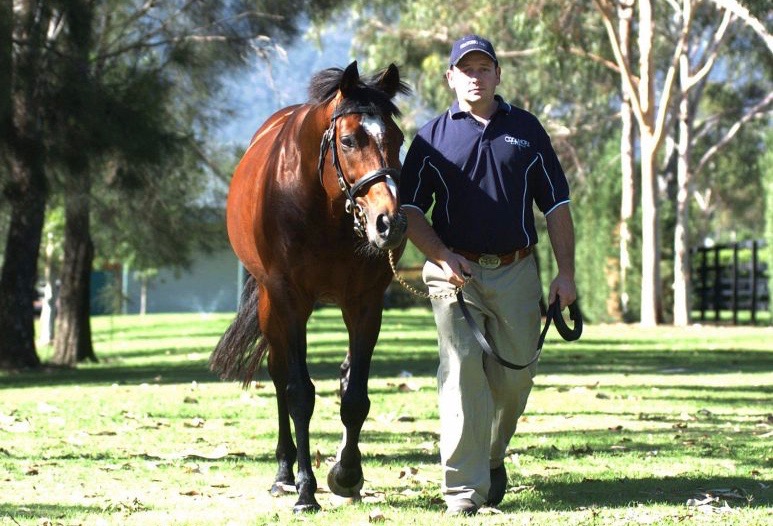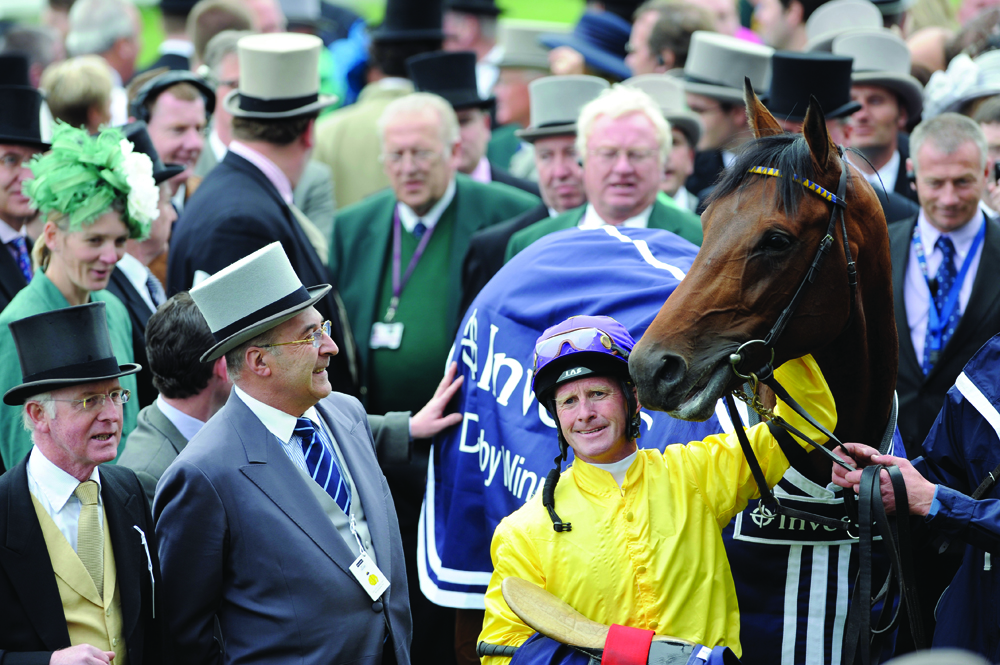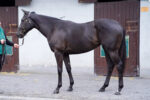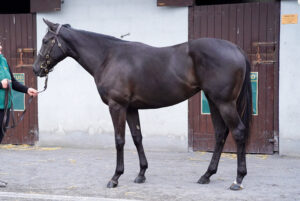Andrew Caulfield runs the rule over the magnificent sons of legendary Arc winner Urban Sea – Galileo and Sea The Stars
With so much of the thinking in thoroughbred breeding focusing on male lines, it is just possible to forget that Galileo and Sea The Stars are half-brothers, sons of the legendary Urban Sea. And, as with most siblings, comparisons are inevitable, even if – as the saying goes – comparisons are odious.
That phrase is indeed unfair when the two horses being compared were both magnificent racehorses. One may have been slightly less talented than the other, but who could care when both won the Derby on the way to becoming Europe’s champion three-year-old? Sea The Stars officially had the edge, though, with Timeform rating him 140, 6lb higher than Galileo. Sea The Stars could also claim to have been the more versatile of the two, with his six Group 1 victories comprising one over a mile, three at around a mile and a quarter and two over a mile and a half. Galileo, on the other hand, gained all three of his Group 1 successes over a mile and a half.
Unfortunately, comparisons are indeed odious for Sea The Stars when it comes to judging the siblings’ relative merits as stallions. Only Galileo’s sire Sadler’s Wells has bettered Galileo’s tally of 12 sires’ championships in the modern era, so Galileo wins this contest hands down. However, at the time of writing Sea The Stars held second place on the current table, one place ahead of Galileo. Sea The Stars had previously finished third in 2016, fourth in 2018, second in 2019 and fourth in 2021, so he is becoming a regular fixture among the top five stallions. And now he has come up with an unbeaten son, Baaeed, who has even been mentioned in the same breath as Frankel, Galileo’s phenomenal unbeaten champion.
There has long been a theory that, for Galileo to shine, he needed a fast mare but the reality is that he could sire top performers from all types of mares. Take a look at his Group 1-winning progeny and you’ll find the likes of Monsun, Theatrical, Silver Hawk, Darshaan, Dalakhani, Shirley Heights, Slip Anchor, Caerleon, Desert King, Belmez, Lando and Erins Isle among their broodmare sires. I could add that Darshaan mares have 22 black-type winners among their 140 foals by Galileo.
There is truth, though, in the fast mare theory, especially from a commercial point of view. Galileo’s sons out of faster mares have been much more marketable, especially if they shone as two-year-olds or at around a mile. I will return to this topic of fast mares later in this article.

Galileo: shone with a variety of mares. Photo – Coolmore
Arguably the biggest difference between the two stallions is in their performance as a sire of two-year-olds. Sea The Stars was the more accomplished of the pair as a juvenile, with John Oxx having him ready to make his debut in mid-July. Sea The Stars showed plenty of promise in finishing fourth, beaten a length, in what proved to be the only defeat of his nine-race career. His first win came little more than a month later and he wound up his first season with victory in the Group 2 Beresford Stakes on September 28. Galileo, for his part, had made his only two-year-old appearance as late as October 28, when he trounced the opposition over a mile on heavy ground at Leopardstown.
Sea The Stars proved fast enough to defeat the likes of Rip Van Winkle and Mastercraftsman
The fact that Sea The Stars proved fast enough to defeat the likes of Rip Van Winkle and Mastercraftsman in the 2,000 Guineas confirmed the impression that he was the speedier of the two half-brothers – a theory supported by his pedigree. Whereas the progeny of Galileo’s sire Sadler’s Wells had an average winning distance of 11.4 furlongs, Sea The Stars is a son of Cape Cross, whose average stood at 9.4 furlongs.
Although Cape Cross was a sizeable rangy individual who gained his first Group success as a four-year-old, he was the son of two very able two- year-olds in Green Desert, winner of the July Stakes and Flying Childers, and Park Appeal, a champion filly who won the Group 1 Cheveley Park Stakes. With these precocious bloodlines, Cape Cross was able to make a blazing start to his stallion career, taking the title of champion sire of two-year-olds with his first crop.
It therefore seemed fair to expect Sea The Stars’ two-year-olds to make an impact when they first raced in 2013, even if they were likely to be more effective over longer distances at three. After all, Galileo had been champion sire of two-year-olds in 2007 and 2010 and was to add four further titles, thanks to the likes of Teofilo, Frankel, New Approach, Churchill, Gleneagles, Minding, Happily, Rhododendron, Misty For Me and Magical.
It has been a very different story with Sea The Stars. With over 1,100 foals of racing age, he has had nearly 800 starters and has racked up the impressive total of 95 black-type winners. Remarkably, only five of those 95 were black-type winners at two. The first was My Titania, winner of the Group 3 C L Weld Park Stakes before developing into a terrific broodmare. Next came the French Listed winner Sivoliere in 2014, the Group 3 Prix des Chenes winner Cloth of Stars in 2015, the Italian filly Call Me Love in 2018 and the Queen’s Reach For The Moon in 2021, when he took the Group 3 Solario Stakes. Others, such as Night Of Light, Stellar Glow, Fox Tal, Star Terms, Alpen Rose, Miss Yoda, Homeryan and Sea Of Sands, were Group-placed.

Sea The Stars: progeny progress well with age. Photo – George Selwyn
So what’s the explanation? It’s possible that part of the answer relates to physique. Sea The Stars is tall and lengthy, standing a good 16.2 hands, so is similar to his sire Cape Cross, who was half an inch short of 16.2. Although Cape Cross will always be best remembered as a sire of a trio of outstanding middle-distance horses in Ouija Board, Golden Horn and Sea The Stars, he had a respectable record as a sire of two-year-old Group winners. The Gran Criterium heroine Nayarra was his only Group 1 winner at that age, but he enjoyed Group 2 success with Sea The Stars, Mokabra, Halicarnasus, Hatta Fort, Cape Dollar and Moohaajim and he was also responsible for a trio of Group 3 winners and 11 Listed winners.
In our stable her name was ‘La Mule’….
Whereas Cape Cross was out of a champion two-year-old, Sea The Stars’ dam Urban Sea won only a mile maiden in the October of her first season. Good enough at three to change hands for approximately £365,000 following her third in the Group 1 Prix Vermeille, Urban Sea peaked at the age of four, when she landed the Arc at odds of 37/1. In a fascinating interview in the Thoroughbred Daily News, her trainer Jean Lesbordes told Emma Berry: “In the stable at the beginning she was the easiest to ride,” he recalls. “Everybody could ride her as a yearling, even the girls who came to help at my stable on a Sunday. She was so straightforward. In our stable her name was ‘La Mule’….
“As a 2-year-old she had a little issue with her fetlock so we had to stop. But it was no problem and then she ran later at two and won the second time she ran at Maisons-Laffitte. She was very easy to train. She was asleep most of the time, but every time we showed her something she picked it up no problem.”
It is this equable temperament that Lesbordes says he believes has been key to the success not just of Urban Sea but of her offspring.
In attempting to explain the difference in their achievements as sires of juveniles, I would refer you back to the list of horses which helped Galileo notch up his six juvenile sires’ championships. Teofilo and Frankel are out of daughters of the sprinter Danehill; New Approach is out of mare by the very fast Ahonoora; Churchill, Gleneagles, Happily and Misty For Me are out of daughters of Storm Cat, a six-time leading juvenile sire in North America; Minding is out of a dual two-year-old Group winner sired by a dual two-year-old Group 1 winner in Danehill Dancer; and Rhododendron and Magical are out of a daughter of top sprinter Pivotal.
Needless to say, these stallions have played a huge part in Galileo’s success story. Pivotal mares have 12 black-type winners, which represents 26% of their 46 foals by Galileo. Danehill’s daughters have 60 black-type winners, for 18 per cent of their 333 foals. Danehill Dancer mares have 25 black-type winners, for 18 per cent of their 138 foals; and Storm Cat’s daughters have 15 black-type winners, for 21 per cent of their 70 foals. Mares by Anabaa, another sprinter, had 11 blacktype winners, for 31 per cent of their 35 foals.
The Coolmore partners literally laid out millions in their bid to secure fast mares for Galileo
The Coolmore partners literally laid out millions in their bid to secure fast mares for Galileo, acquiring the likes of Airwave, Tiggy Wiggy, Marsha, Mecca’s Angel, Quiet Reflection and Heartache.
It goes without saying that breeders have also tried sending daughters of fast stallions to Sea The Stars, but without replicating the success enjoyed by Galileo. For example, his 22 foals out of Danehill mares, which supplied Galileo with so many Group 1 winners, are headed by the Group 3 winners My Titania and Stellar Mass. Similarly, his 21 foals out of Danehill Dancer mares include only one black-type winner, the Group 2 winner Lavender’s Blue.
Moving on to Pivotal, there is only one black-type horse – the Group 2 winner Mutakayyef – among their 31 foals. There is also one black-type horse – the Group 3 winner Star Storm – among 11 foals out of Storm Cat mares. There are no black-type winners among the 22 foals out of Invincible Spirit mares, and he has also drawn a blank with daughters of such as Oasis Dream and Indian Ridge, though the sample sizes are not always large enough to give a full picture.
It seems that Sea The Stars is more at home with mares by stallions whose progeny have quite a high average winning distance. For example, he has ten per cent black-type winners among his 77 foals out of mares by Galileo’s sire Sadler’s Wells, with the Group winners Taghrooda, Storm The Stars, Fifty Stars, Knight To Behold, Raa Atoll and Reach For The Moon among them.
Sea The Stars’ partnership with mares by Monsun has also been highly fruitful, with no fewer than seven black-type winners among their 32 foals. Sea The Moon is the star of these seven but they also include the Group 2 middle-distance winner Night Music, the Group 1 Sydney Cup winner Shraaoh and Group 3 winners Raheen House and Soudania.
Hernando’s daughters have also done extremely well, with the top-notch filly Sea Of Class, the smart Sea La Rosa and her Group 3-winning brother Deauville Legend among their ten foals. The broodmare sires of Sea The Stars’ other 2022 Group winners also include Nayef, Authorized and High Chaparral. And then there’s Bering, who ranks as the broodmare sire of only one foal by Sea The Stars – the wonderful Stradivarius.
One thing Sea The Stars does have in common with Galileo is that they have both excelled with daughters of the top miler Kingmambo. Galileo has five black-type winners bred this way, headed by those top colts Ruler of the World and Ulysses, while Sea The Stars has eight among his 31 foals. Baaeed followed Cloth Of Stars and Zelzal as the third to win at the top level and his year-older brother Hukum became the cross’ fourth Group 1 winner when he took the Coronation Cup.
Incidentally, Kingmambo isn’t the only winner of a European Guineas race to figure among the broodmare sires of Sea The Stars’ best performers. Unlucky Oaks second Emily Upjohn has a dam by Barathea, while the champion older horse Crystal Ocean has a dam by Mark of Esteem.
Perhaps that’s the answer to breeding a smart performer by Sea The Stars. Send him mares by milers and middle-distance horses and you could add to his tally of 17 Group 1 winners. They include winners of the Derby and Oaks in Britain, Ireland and Germany, plus many of the most prestigious prizes for three-year-olds and older horses.



